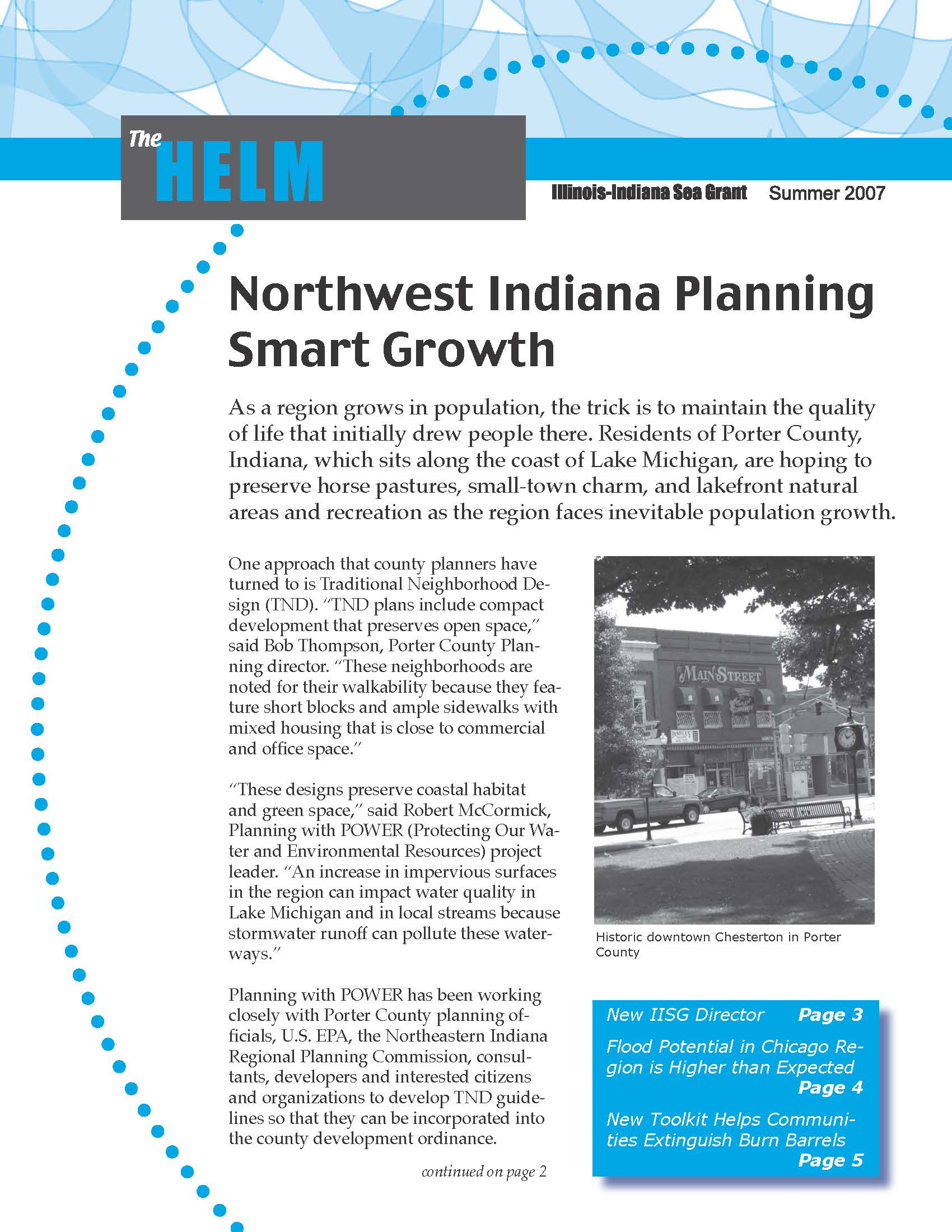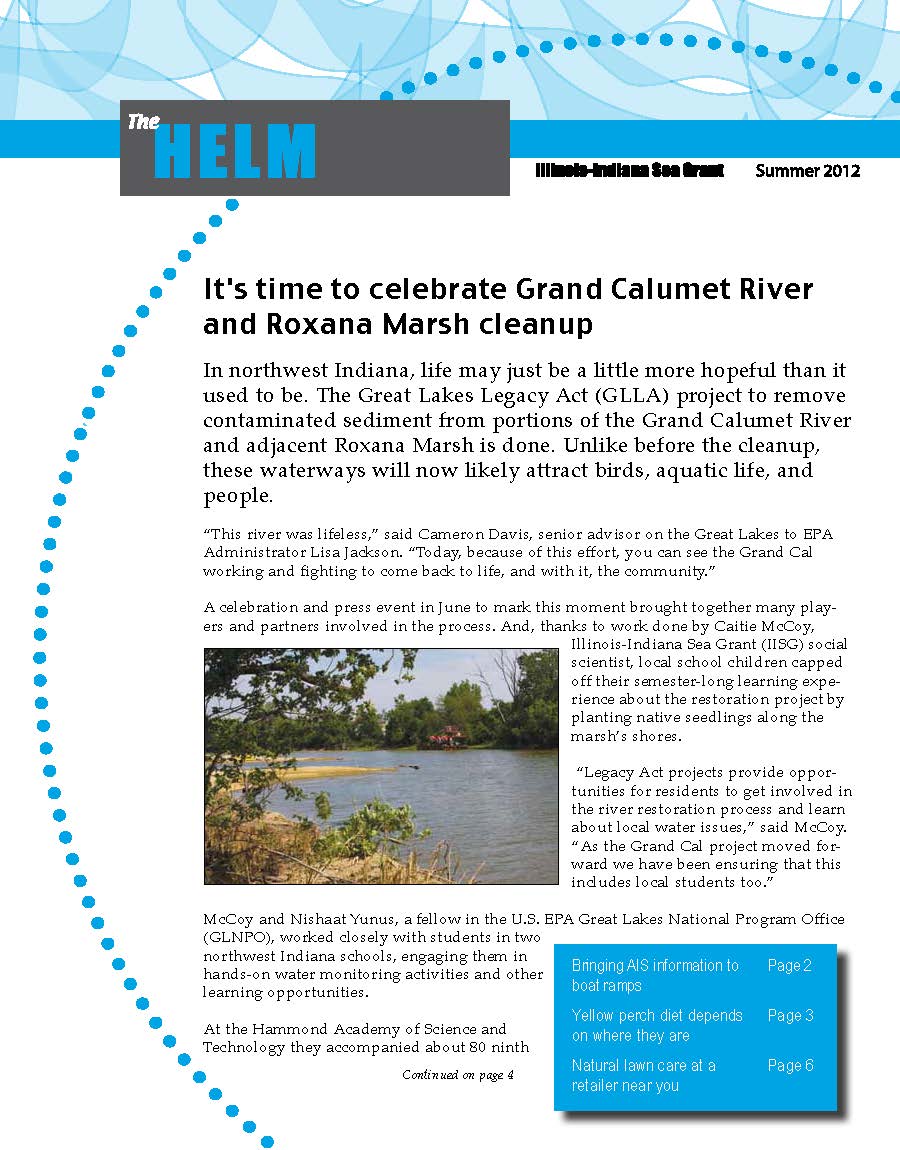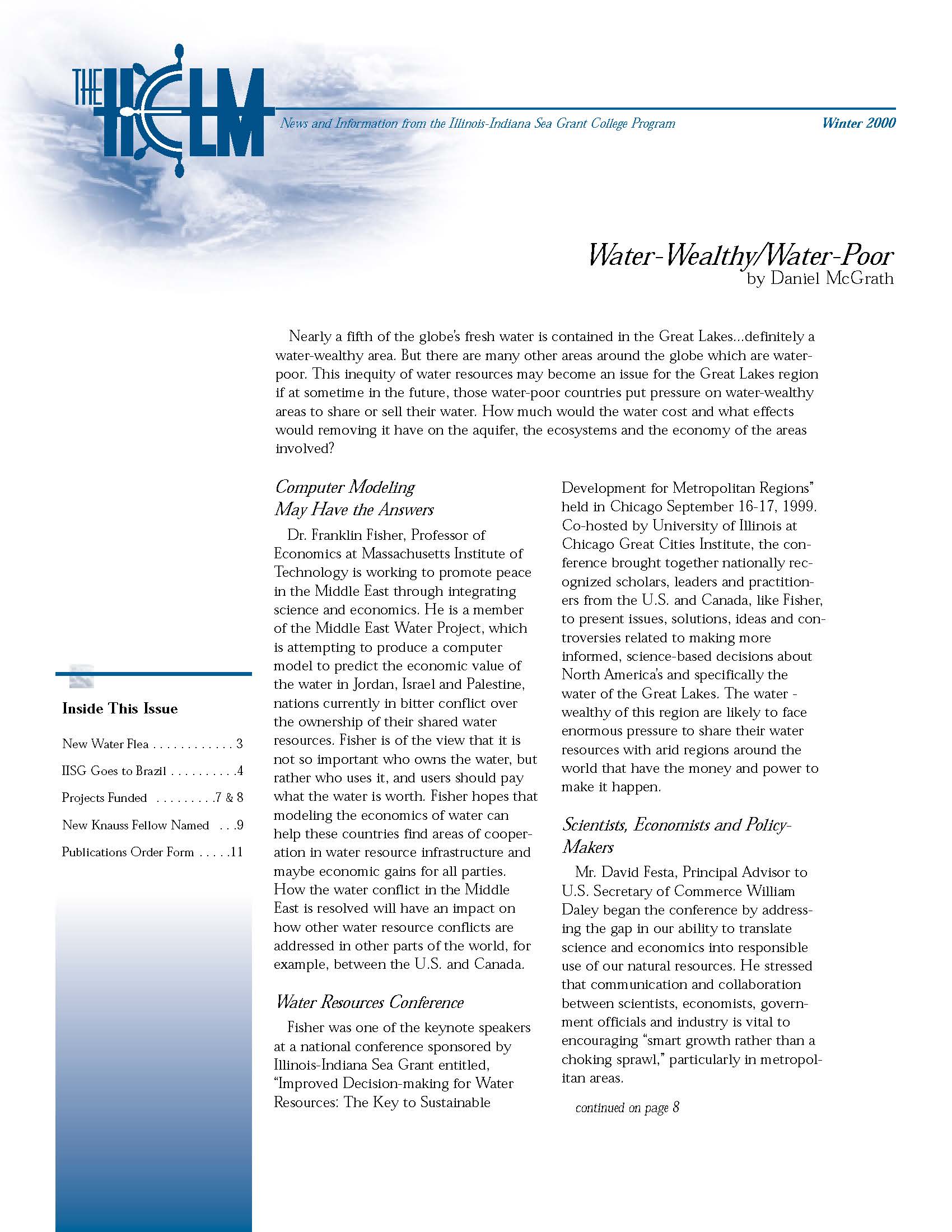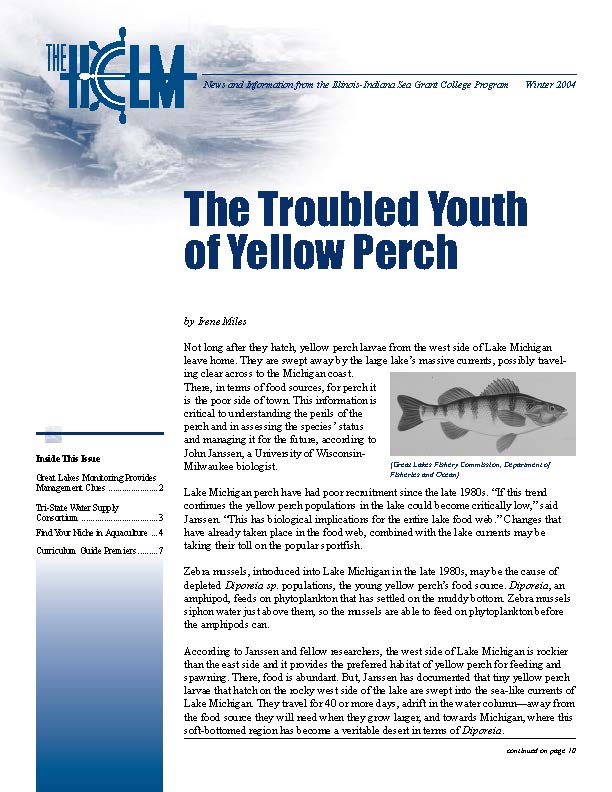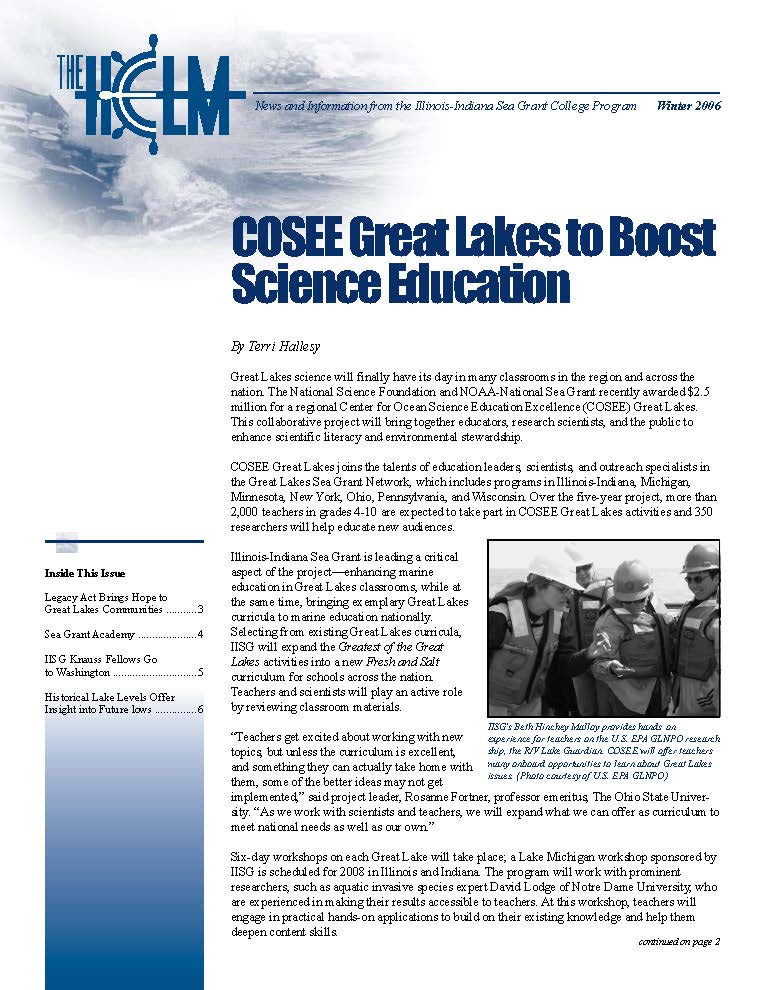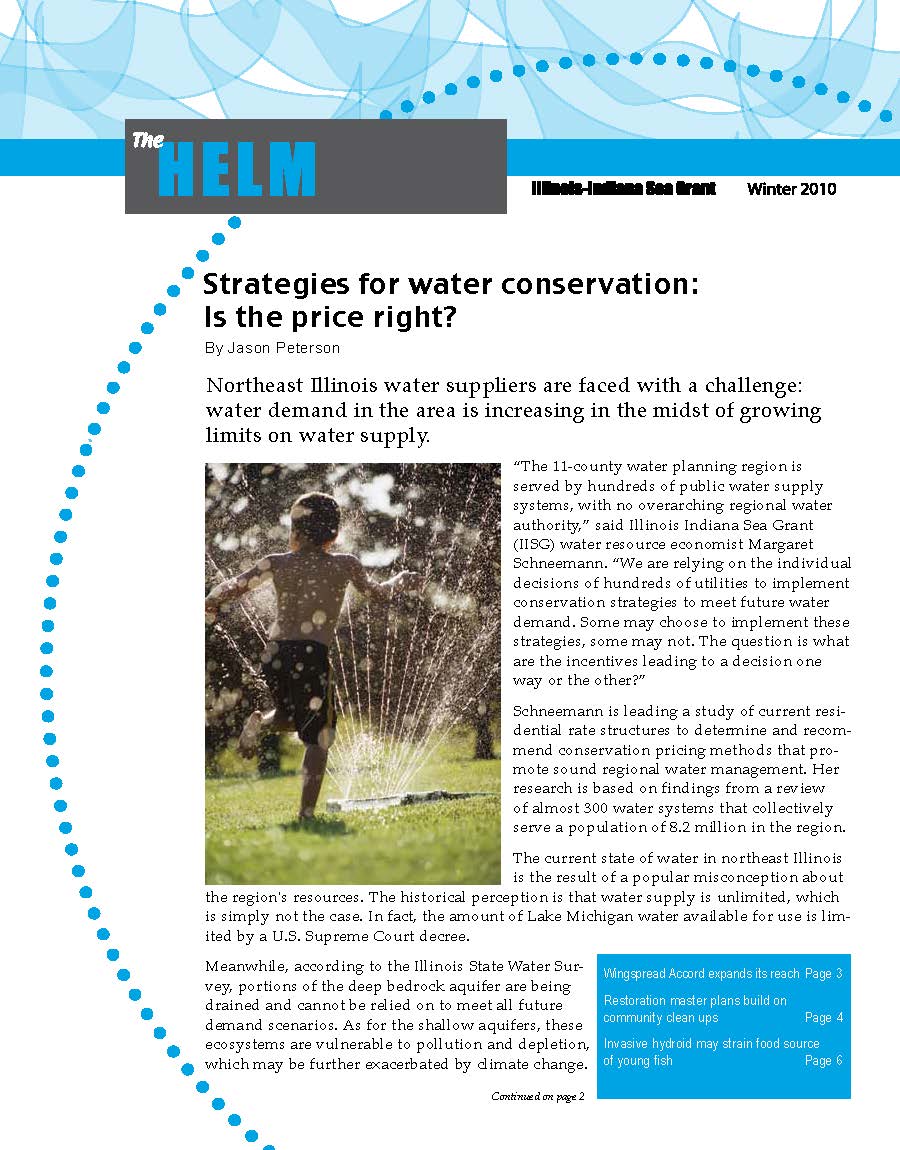Results
File Type: pdf
File Size: 2.26 MB
Year: 2007
Feature Headlines
- Northwest Indiana Planning Smart Growth
- New IISG Director
- Flood Potential in Chicago Region is Higher than Expected
- New Toolkit Helps Communities Extinguish Burn Barrels
Download File
File Type: pdf
File Size: 2.71 MB
Year: 2012
Feature Headlines
- It’s Time to Celebrate Grand Calumet River and Roxanna Marsh Cleanup
- Bringing AIS Information to Boat Ramps
- Location is Key to Yellow Perch Diet and Success
- Natural Lawncare
Download File
File Type: pdf
File Size: 592.68 KB
Year: 2000
Feature Headlines
- Water-Wealthy/Water Poor
- Charlebois Indentifies New Invader
- IISG Goes to Brazil: An Interview with LaDon Swann
- NiSource and IISG Team Up to Fund Environmental Projects
- The Forecast for E. coli is….
Download File
File Type: pdf
File Size: 541.08 KB
Year: 2004
Feature Headlines
- The Troubled Youth of Yellow Perch
- Great Lakes Monitoring Provides Management Cues
- Consortium to Plan for Tri-state Water Supply
- Find Your Niche in Aquaculture
- New IISG Research Addresses Coastal Concerns
- Camping Out with Sea Grant
- New Curriculum Guide Premiers in Chicago
- Reporting New Aquatic Invaders is a Mouse Click Away
Download File
File Type: pdf
File Size: 661.36 KB
Year: 2006
Feature Headlines
- COSEE Great Lakes to Boost Science Education
- Shedd Aquarium Opens Great Lakes Invader Exhibit
- Legacy Act Brings Hope to Great Lakes Communities
- Sea Grant Academy
- IISG Knauss Fellows go to Washington
- Historical Lake Levels Offer Insight into Future Lows
- Stream Restoration Workshops Get Real-World Test
Download File
File Type: pdf
File Size: 835.53 KB
Year: 2010
Feature Headlines
- Strategies for Water Conservation: Is the Price Right?
- Wingspread Accord Expands its Reach
- Restoration Master Plans Build on Community Clean Ups
- SOLEC Spotlights Great Lakes Nearshore Conditions
- Invasive Hydroid may Strain Food Source of Young Fish
Download File
Page 34 of 40
Note: Some older Illinois-Indiana Sea Grant publications have not yet been restructured into ADA compliant formats. We are actively working on this. If you are having difficulty accessing a particular item in one of our databases, please contact iisg@purdue.edu with the name of the item and its URL for further assistance.
